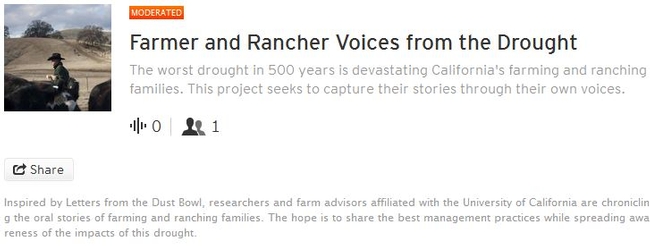Posts Tagged: farmers
Bay Area Bee Fair on Oct. 13: The Place to 'Bee'
It's a fair. It's a party. It's a pollinator party. It's the Bay Area Bee Fair in Berkeley. And it's the place to be on Sunday, Oct. 13 at the...
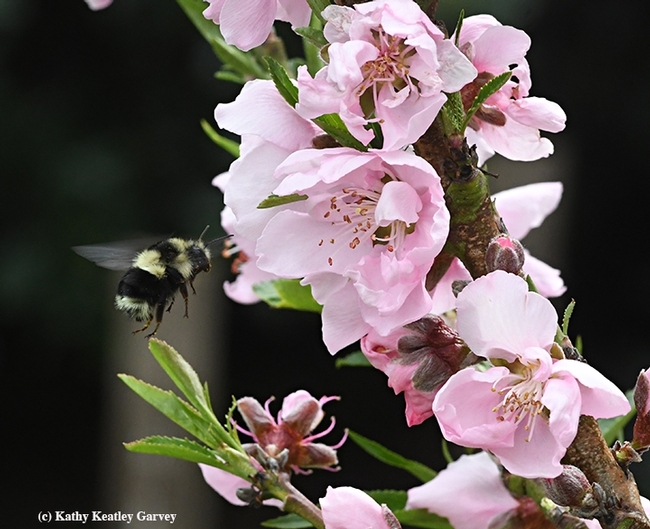
Black-tailed bumble bee, Bombus melanopygus, nectaring on nectarine blossoms. (Photo by Kathy Keatley Garvey)
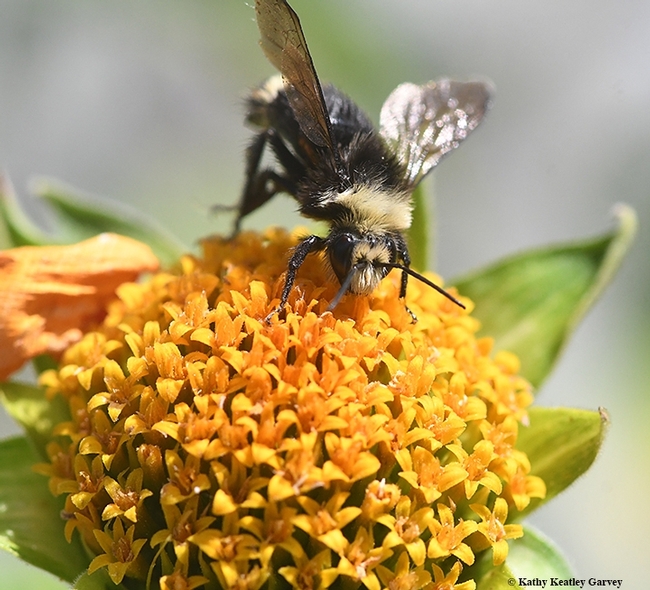
A yellow-faced bumble bee, Bombus vosnesenskii, nectaring on Mexican sunflower, Tithonia. (Photo by Kathy Keatley Garvey)
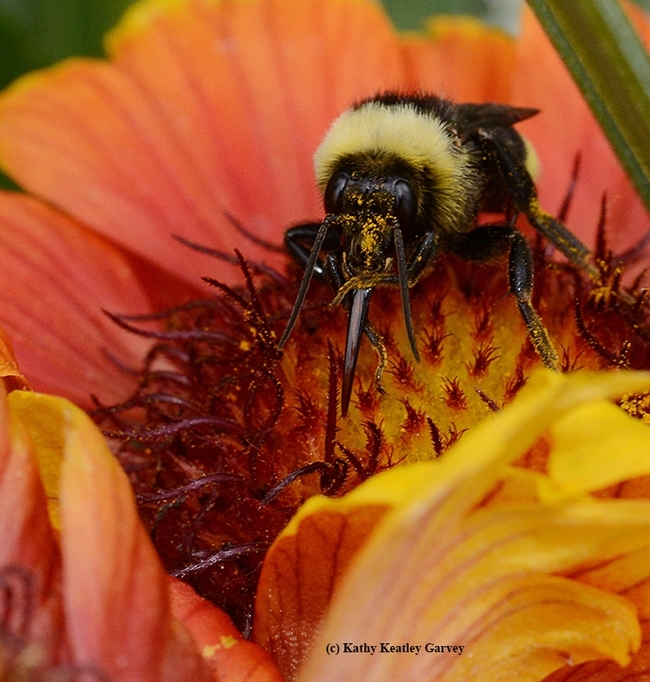
A black-tailed bee, Bombus californicus, nectaring on blanket flower, Gaillardia. (Photo by Kathy Keatley Garvey)
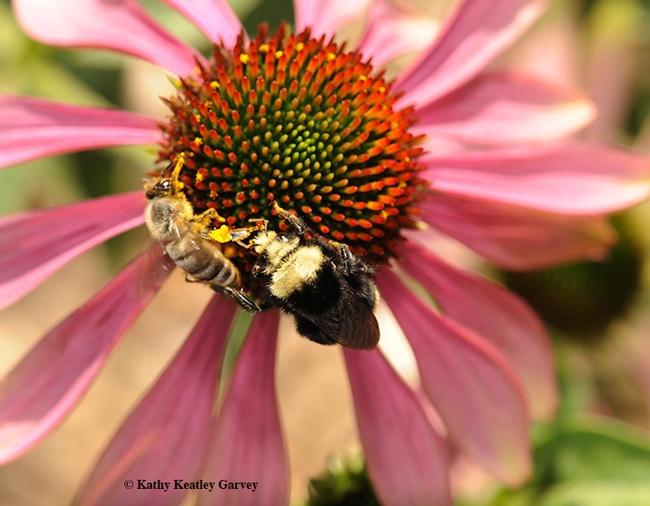
A bumble bee, Bombus vosnesenskii, and honey bee, Apis mellifera, sharing a purple coneflower, Echinacea purpurea. (Photo by Kathy Keatley Garvey)
Lovin' the Lavender
Lovin' the lavender... If you attended the Lavender Festival last weekend at the six-acre Araceli Farms at 7389 Pitt School Road, Dixon, you were in...
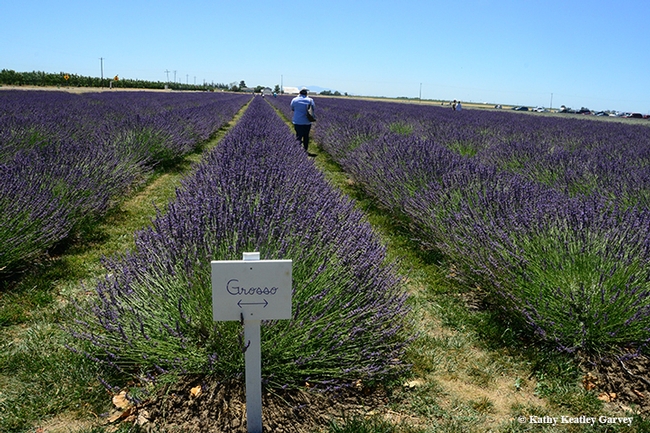
The six-acre lavender fields on the Araceli Farms, on the outskirts of Dixon, glow during the Lavender Festival. (Photo by Kathy Keatley Garvey)
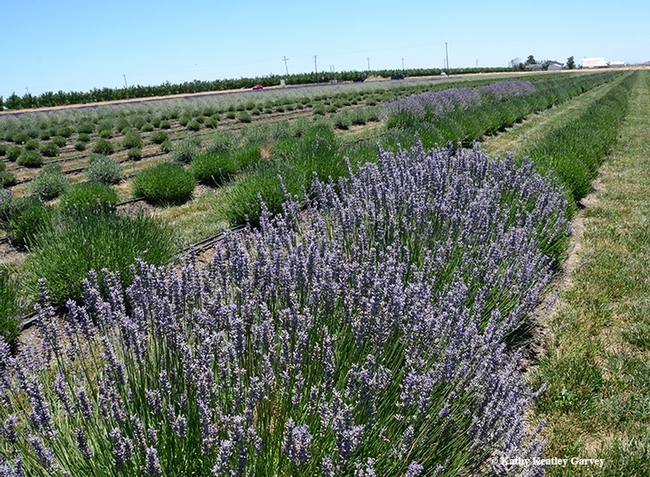
The Araceli Farms are planted with seven varieties of lavender: seven varieties of lavender: Grosso, Provence, White Spike, Royal Velvet, Violet Intrigue, Folgate, and Melissa. (Photo by Kathy Keatley Garvey)
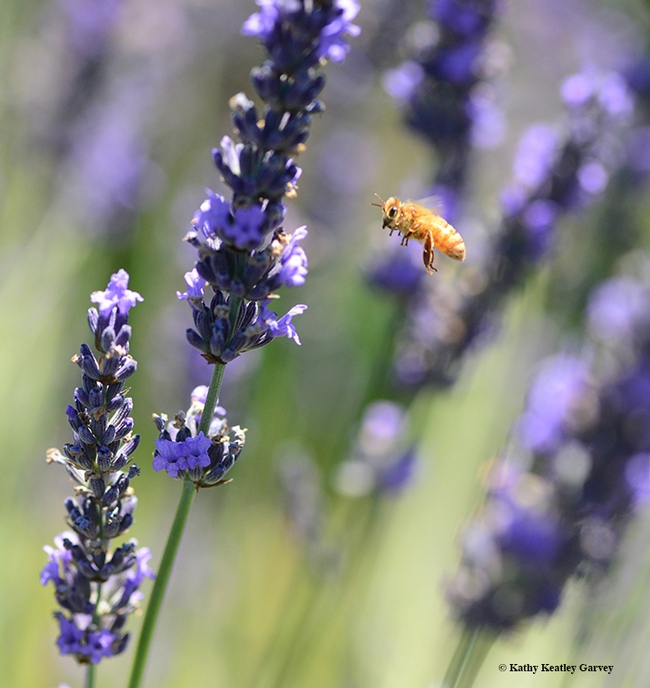
A Cordovan honey bee, the color of pure gold, takes flight through the lavender fields. (Photo by Kathy Keatley Garvey)
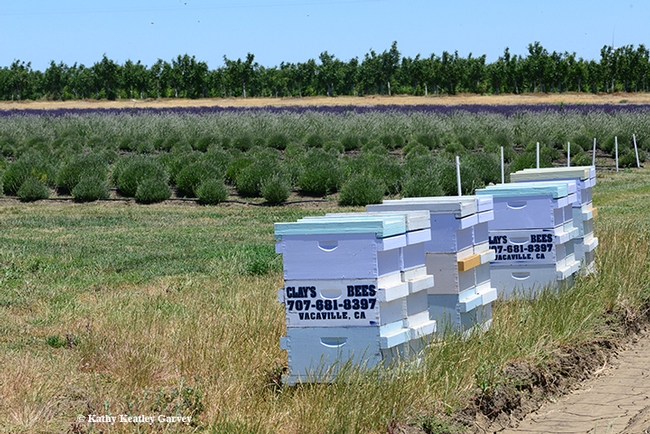
Clay's Bees--Clay Ford, owner of the Pleasants Valley Honey Company, Vacaville--pollinate the lavender fields. (Photo by Kathy Keatley Garvey)
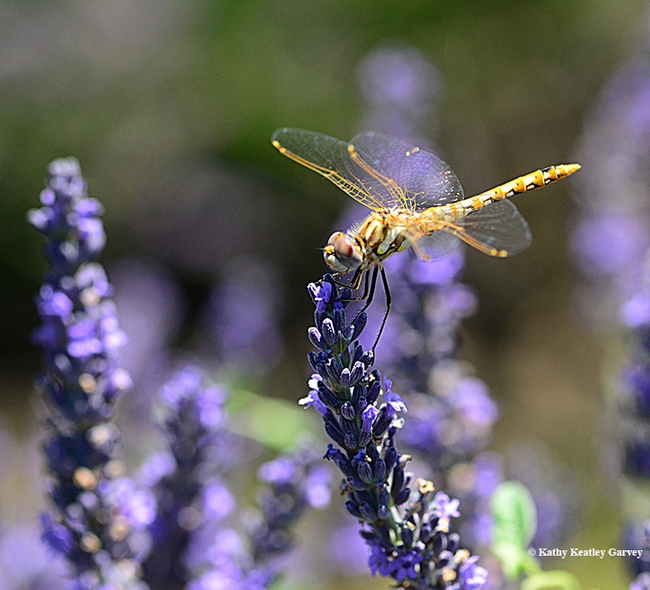
A variegated meadowhawk (Sympetrum corruptum)in the lavender fields. (Photo by Kathy Keatley Garvey)
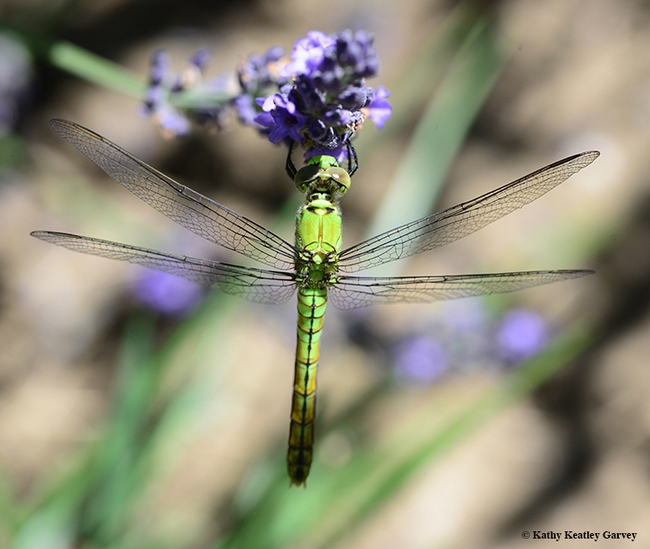
A Western pondhawk (Erythemis collocate) rests on a lavender. (Photo by Kathy Keatley Garvey)
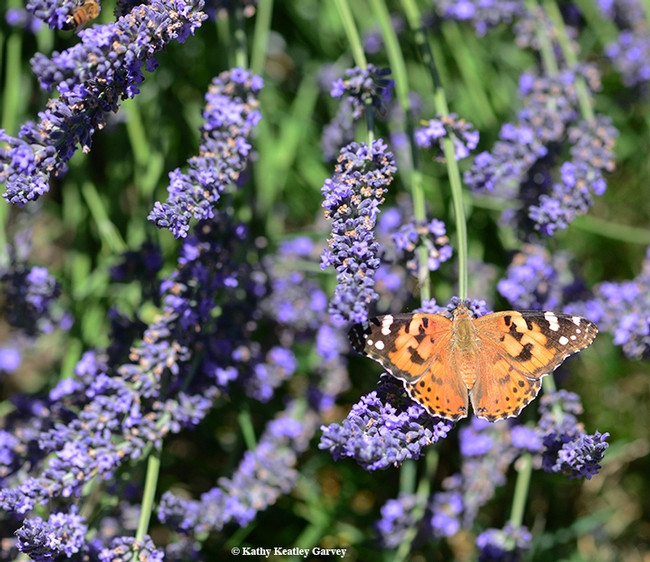
A painted lady butterfly (Vanessa cardui) flutters around the lavender fields of the Araceli Farms in Dixon on June 22. (Photo by Kathy Keatley Garvey)
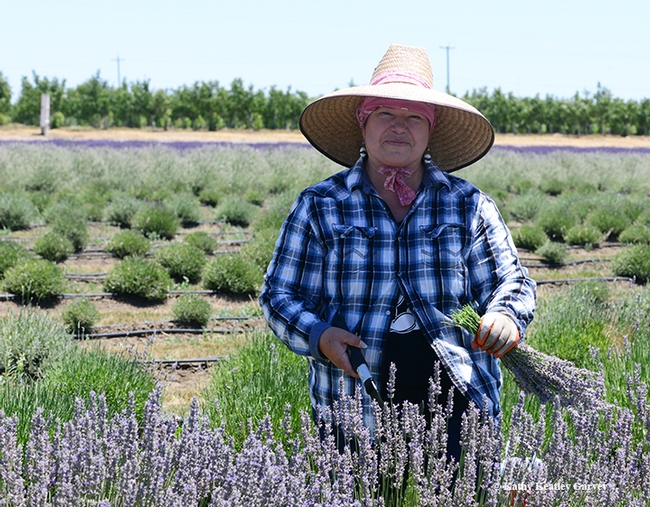
Maria Gonzalez of Dixon cuts lavender on the Araceli Farms. (Photo by Kathy Keatley Garvey)
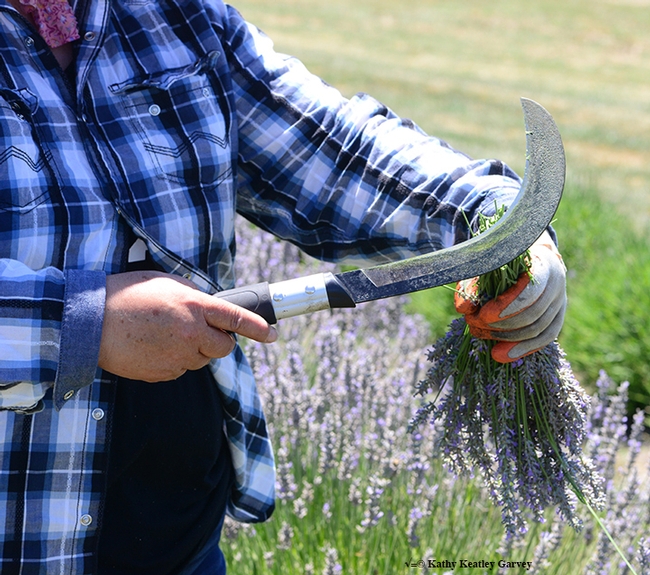
Close-up of the curved knife, perfect for lavender harvesting. (Photo by Kathy Keatley Garvey)
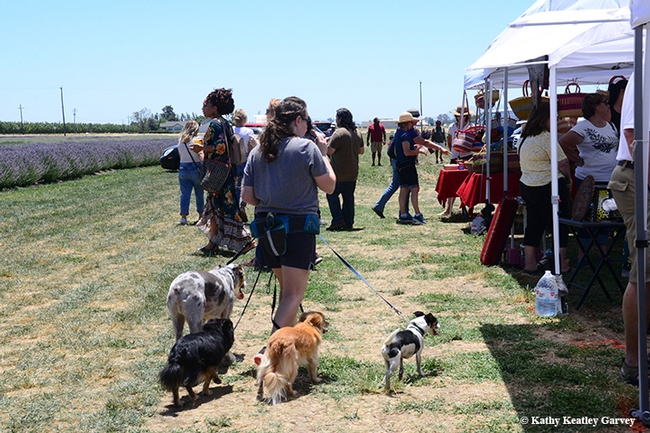
Visitors at the Lavender Festival at Araceli Farms stroll through the vendor area. (Photo by Kathy Keatley Garvey)
Thank a Farmer, Thank a Beekeeper
You may have missed it, but today (Thursday, Oct. 12) is National Farmers' Day. The day originated back in the 1800s as a way to recognize and thank...
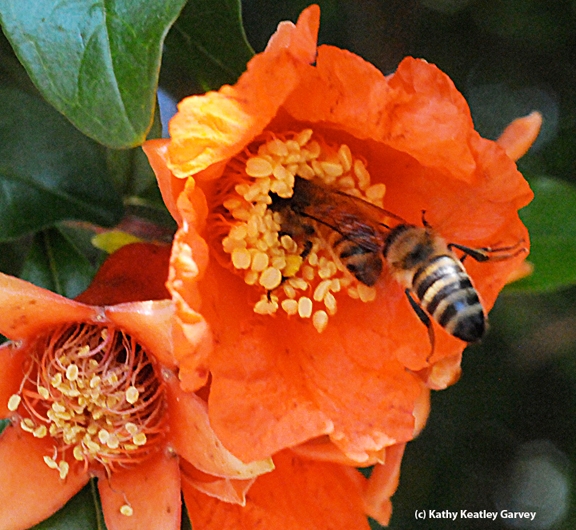
Two honey bees want the same pomegranate blossom. (Photo by Kathy Keatley Garvey)
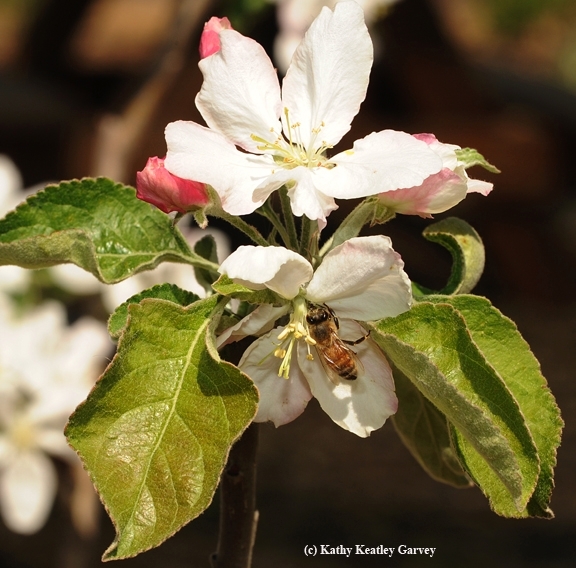
A honey bee pollinating an apple blossom. (Photo by Kathy Keatley Garvey)
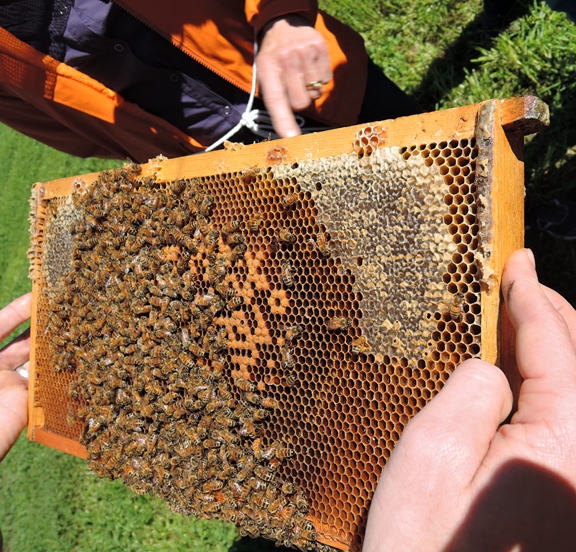
A new beekeeper examines a frame during a UC Davis honey bee course at the Harry H. Laidlaw Jr. Honey Bee Research Facility. Extension apiculturist Elina Lastro Niño and her staff teach classes for the public. (Photo by Kathy Keatley Garvey)
How to Have a Rice Day
Rice farmers in southeast Asia don't "have a rice day" when the dreaded brown planthopper is infesting their crops. The brown planthopper,...
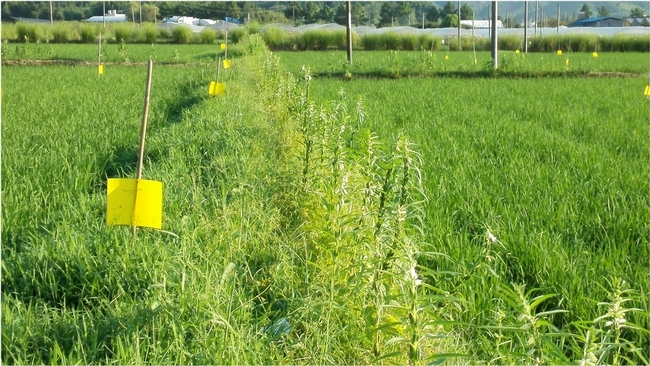
This photo shows sesame and the grass, Leersia sayanuka, planted together along a rice field edge in China. Sesame is important because it provides pollen and nectar for the parasitoids. (Photo courtesy of Zhongzian Lu)
UC team launches 'Voices from the Drought'
Water sloshes from a fill hole atop the steel tank and strikes the dirt road in puffs of dust. With weathered hands, short nails and a once black felt cowboy hat, Adam Cline motors the water truck through the anxious herd. Piled on the floor beside him are several 40 pound bags of soybean meal, a more affordable protein supplement that protects the herd from malnourishment. Cline is fortunate: his cautious management strategies over the last two years will likely carry this operation through yet another drought year, without having to sell off any cows.
“Every rancher is equipped for an average drought,” he tells me. “But a drought like this is really hard to manage for… Emotionally it's like a battle every day to try to figure out how you can afford to feed your cows, how you're going to get water to them.”
Letters from the Dust Bowl
With as little as a quarter of the average rain in 2013, the drought in this region has now entered its third year, breaking records on a regular basis. And it may be the worst here in 500 years. Many of the University of California researchers and farm advisors helping the state's agriculture industry prepare for the coming dry summer months are comparing the water shortage to the historic Dust Bowl of the 1930s, when many Oklahoma farmers and ranchers left their homes in hopes of a better life in California. In her "Letters from the Dust Bowl," Caroline Henderson captured the voices of agriculture's most difficult era in America.
In honor of Henderson's work, a team of UC researchers is developing a project that will use digital tools to capture the voices of the farming and ranching families who are today battling the worst drought they have witnessed. On one front, the project, called Farmer and Rancher Voices from the Drought, is cultivating a following through a new Facebook group. Later print and multimedia stories will be added to a UC Davis drought page.
Today, however, we are launching a new audio component, where farmers and ranchers are interviewed and recorded by a friend, colleague or loved one. They document their stories of the drought, explaining what practices have worked for them so that others dealing with these struggles can better cope. Through the broad 100-year Cooperative Extension effort at the University of California, faculty, staff and researchers are reaching out to the extensive network of farming and ranching families across the state, encouraging each of them to share their stories.
How the 'Voices' project works
The audio component of the project is hosted on SoundCloud, where anyone can easily record and upload an audio track to share. Our team is moderating the SoundCloud group and approving each recording. The tracks will be shared across our social media and web pages, where they will hopefully gain the attention of media, as well as the general public.
Here are a few guidelines to smooth the process:
- Create an account. Recording is easy, but first you must go to the SoundCloud site and sign up. You can also download and record with their smart phone app.
- Research your strategy. StoryCorps, a nonprofit project, has an excellent instruction guide for helping you record your interview. While you're there, we encourage you to also upload your finished story to the StoryCorps DIY page, where it will be preserved at the Library of Congress.
- Keep it short. By limiting your recording to three minutes, your story will keep listeners interested while maintaining its most essential parts.
- Frame your conversation around questions. Have your interviewer select from this list and add follow-ups:
- Provide your name, what you do and some background information on your farming or ranching operation.
- How has your operation been affected by the drought?
- What have been your management practices in response?
- What will you do differently if it continues?
- Is this the worst drought year you've experienced?
- What are your stocking and supplemental feed rates? Or how much land is planted versus fallow? Explain.
- What will your operation look like next year if the drought continues?
- How has this affected you and your family?
- What advice would you give others in similar situations?
- What should those outside California know about this drought?
- Finally, name it. Once you have successfully loaded your conversation onto our SoundCloud group, let us know more about yourself. Send us your feedback and some details so we can follow up: an email address or phone number, the storyteller's name, the interviewer's name, the company name (if you're affiliated with an agricultural organization) and a photo.



